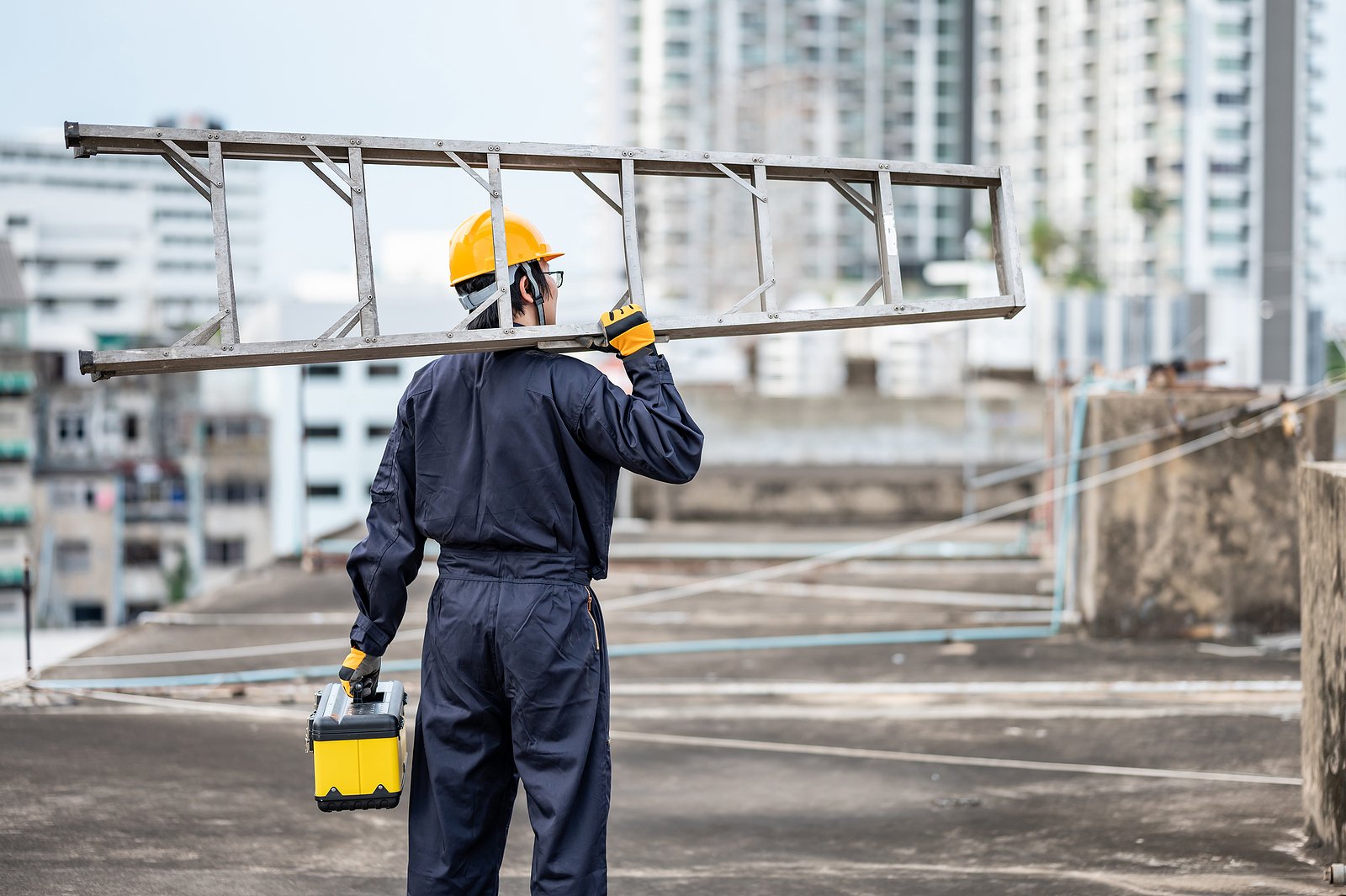
Falls are the largest cause of accidental death in the construction industry. They account for 50% of all fatalities. There is no distinction between low and high falls, a fall at or below ground level, as long as there is the potential that a person could fall a distance liable to cause personal injury.
To prevent or minimise risk when planning for work at height, consider the work to be done and take a sensible risk-based approach to identify suitable precautions. There is a hierarchy of control measures for determining how to work at height safely, i.e. a prioritised list of measures to take, starting with avoiding work at height wherever possible. If it can’t be avoided then:
- use work equipment to prevent falls where work at height cannot be avoided;
- where the risk of a fall cannot be eliminated, use work equipment to minimise the distance and consequences of a fall should one occur;
- always consider measures that protect all those at risk, ie collective protection measures (scaffolds, nets, soft landing systems) before measures that only protect the individual, ie personal protection measures (a harness);
- ensure work is carried out only when weather conditions do not jeopardise the health and safety of the workers.
A ladder is bottom of the hierarchy of control because they do not prevent or mitigate a fall, so their use must be justified. Make certain there is no safer means of access before using a ladder or stepladder, even for short-duration work. Many accidents result from using ladders for a job when a tower scaffold or MEWP would have been safer and more efficient.
However, if ladders are used by competent people and are regularly inspected and well maintained, then ladder use may be justified. Inspect all ladders before each use to make sure they are in good working condition and free of any visible defects. Damaged ladders should be taken out of use and properly marked so they won’t be used again until they can be repaired or replaced. Ladders should be also inspected periodically by a competent person.
A ladder should be primarily used for access and only be used as workplaces for light work of short duration, and then only if it is safe to do so. Heavy work activity (such as drilling or carrying heavy or awkward loads) should never be carried out from a ladder. When climbing a ladder with a load, a safe handhold must always be maintained.
To use a ladder safely :
- do not overload it – the person and their equipment should not exceed the highest stated load;
- do not overreach – keep your belt buckle inside the stiles and both feet on the same rung

Almost half of the accidents involving ladders happen because the ladder was not prevented from falling or slipping so check the ladder is secure by
- tying the ladder to a suitable point, making sure both stiles are tied
- OR where this is not practicable, use an unsecured ladder supplemented with an effective ladder stability device (eg a ladder stay and anti-slip device). Such devices must ensure that the ladder does not run sideways, slide away from the wall or rotate about a stile
- securely wedge the bottom of the ladder to prevent it sliding, eg against a wall;
- footing the ladder is the last resort and should be avoided by the use of other access equipment.
Ladders and stepladders are among the most commonly used pieces of access equipment on a construction site and perhaps the most misused. This is probably because we all have ladders at home and familiarity breeds complacency but don't underestimate the potential dangers of neglecting ladder safety.